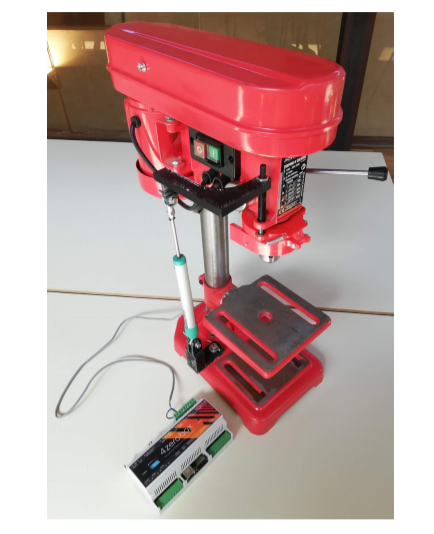Today, I would like to bring attention to a paper that I co-authored with my colleagues from the University of Pisa, and Zerytnh. The paper focuses on the Internet of Things concept and tries to explore this “buzz acronym” in the context of industrial data acquisition for Business Process Management applications.
Due to the big push of cloud and technology vendors nowadays we are facing a race towards data acquisition from industrial machines. However, the typical workflow adopted when implementing the Industrial Internet of Things to the management of business processes has several limitations.
In the paper, we introduce a user-centered paradigm that inverts the typical IndustrialInternet of Things workflow by shifting from the extraction of data to the transformation of a machine into a smart appliance.
Proposed model
The proposed paradigm starts from the typical DIKW (Data, Information, Knowledge, Wisdom) pyramid adapted to the context of the Industrial Internet of Things (I-IOT) used as enabling technology for Business Process Management.
The use case shows the “smartification” of a legacy drill press retrofitted with only two non-invasive sensors in order to create a smart system able to provide actual information needed to optimize its use and maintenance within the business process.
Some of the questions that arise during this process are:
- Why objects should enter in one of the most used human communication channels?
- Why objects should be interested in communicating with each other and what do they want to say?
- How can object communicate with each other as they speak different languages?
- How can object convey us useful and comprehensible data and so information?
The answer is simple: the internet is designed for people and allows people to solve some problems and perform tasks. When a smart object or industrial ma-chine becomes part of the internet, its capabilities need to become accessible by other machines and by people to do something for helping people in satisfying their needs.
To learn more about this topic read the full paper.
A new data extraction model and the 4ZeroPlatform
The hype generated by the Industry 4.0 paradigm is pushing machine producers and shop floor managers to connect their machines for enabling continuous data extraction. Unfortunately, most companies have shop floors mainly composed of legacy machines that are still working in optimal conditions but are not Industry 4.0 compliant.
Industrial IoT experts typically suggest upgrading these machines with new PLCs endowed with modern networking capability, thus enabling continuous data stream.
But this process is typically expensive, invasive, and most of the time requires an important redesign of the machine control system and electrical apparatus.
So, in most cases, legacy machines are left offline waiting for their replacement.
We believe that a Zerynth-powered paradigm could be a solution to this problem. If we move the focus from the data to the functionalities of the machine it is possible to make machines “smart” by acquiring only a few data.
It isn’t a technological problem anymore, it is a design problem. We need to move from a machine connection challenge to an industrial machine smartfication design process.
The Zerynth-powered paradigm has been applied in the last years by Zerynth to various industrial scenarios using the 4ZeroPlatform.
4ZeroPlatform is a plug-and-play data gathering, processing, and reporting solution that provides visibility and optimization of Industrial Processes also with legacy machines.
The platform is composed of:
- 4ZeroBox, a multi-sensor, multi-protocol data acquisition unit, with edge-computing capabilities that act as “modem” connecting the industrial machines to the cloud or company server;
- 4ZeroManager, a Cloud or “on-premise” software for device and data management that enables easy integration with Data Analysis and BI tools.
Use Case: Retrofitting of a legacy drill press
The case study is represented by a manual drill press for drilling wood. The company needed help with the operators in choosing the right cutting parameters. Since wood is a natural material whose hardness varies from tree to tree, and also from batch to batch, and even in time (due to the aging). Therefore the standard tables with parameters for wood do not work as well as in metals where the parameters are more stable.
The drill press retrofitted with the linear position sensors for the measurement of the chuck position. The sensor is connected to the 4ZeroBox for data acquisition
and streaming.
The proposed solution is far from being automatic, but it was not the purpose (it does not make any sense to automate a manual machine) and it seems to meet the requirements that were given by the company.
If you want to learn more about the topic, and how it was possible to “smartify” a legacy drill press to give the user feedback on the correct use of the machine, read the full paper.
Share This Story, Choose Your Platform!
Follow Zerynth on
Latest Posts






